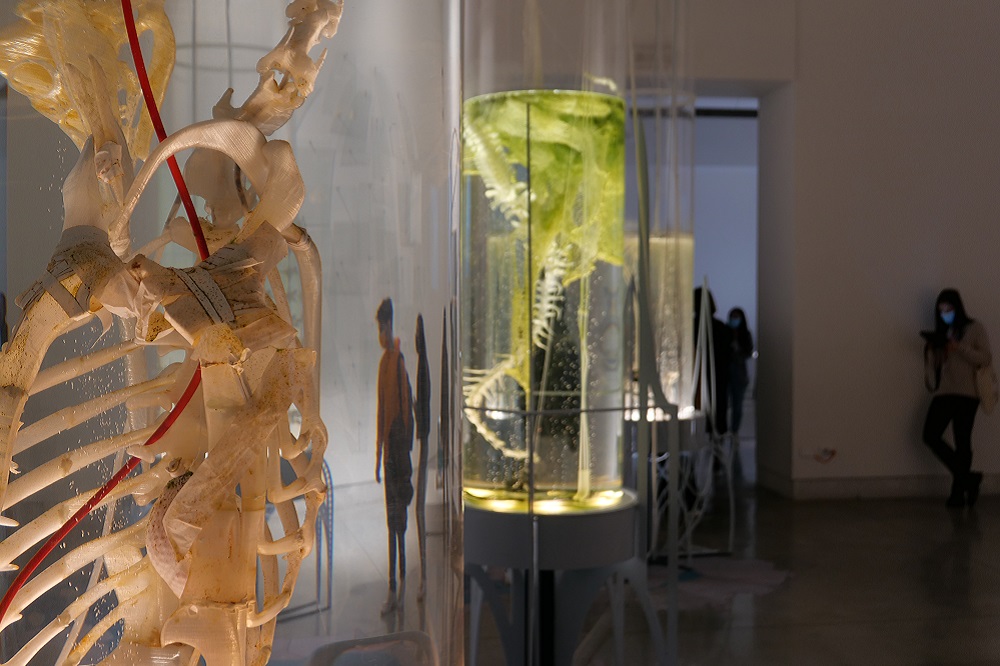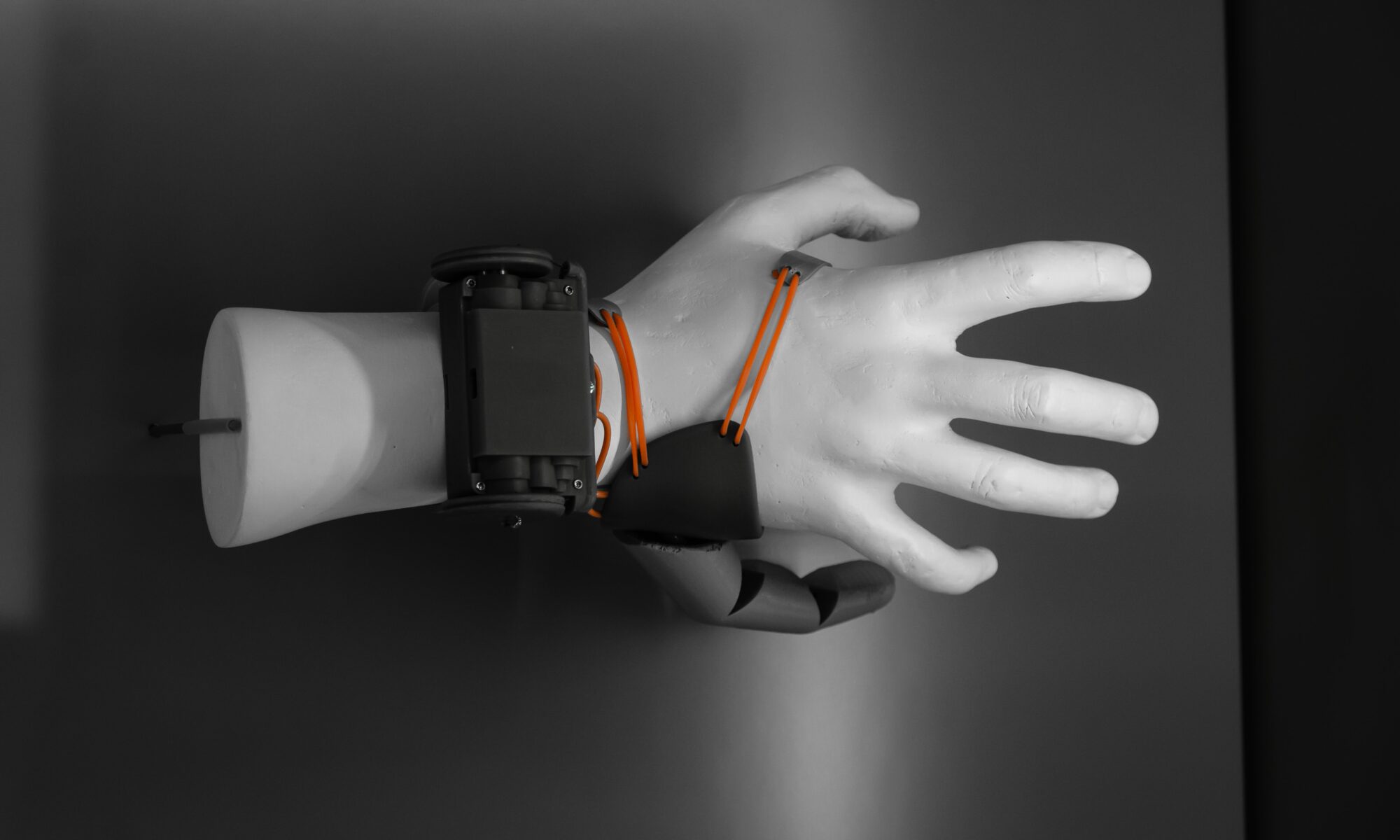The 17th International Architecture Exhibition – the entire series, including the art section, is known as La Biennale di Venezia – ran from 22 May to 21 November 2021, with the Salon Suisse curated by architect and publicist Evelyn Steiner. On 18 November 2021, the event “Jethro Knights, Armor Guyver, and Mutant X: How transhumanists challenge architecture” took place. Prof. Dr. Oliver Bendel gave a talk on “Human and animal enhancement in the context of architecture”, followed by a discussion with Mike Schaffner (a Swiss cyborg) and Prof. Dr. Georg Vrachliotis (an architect at TU Delft). First, the information and machine ethicist clarified key terms such as “human enhancement”, “animal enhancement”, “biohacking”, “bodyhacking”, “cyborg”, and “transhumanism”. He also brought in his own terms “robot enhancement” and “reversed cyborg” or “inverted cyborg”. He then presented examples of human enhancement and animal enhancement, including in the context of architecture: cats with chips getting into the house, humans with chips bringing the smart home to adaptations, animals and humans with chips and transmitters detected in time in traffic, and enhanced and improved organisms that can live on alien planets. He concluded by offering ethical considerations. He was open to the idea of cyborgs and critical of the transhumanism movement. The booklet on Salon Suisse is available here.
Bodyhacking as Movement, Enhancement, and Adaptation
In November 2021, “Mensch. Maschine. Kommunikation” (eds. Sarah Brommer and Christa Dürscheid) was published by Narr. The two editors introduce the topic in “Mensch-Mensch- und Mensch-Maschine-Kommunikation”. In the “Mensch-Mensch-Kommunikation via Maschine” part, the contributions come from Linda Bosshart (“WhatsApp, iMessage und E-Mail”), Roberto Tanchis and Leonie Walder (“Animojis”), Mia Jenni (“Die weinende, virtuelle Influencerin”), and Florina Zülli (“‘Neuer Partner’ in den Warenkorb hinzufügen?”). The part “Mensch-Maschine-Kommunikation I: Kommunikation mit Robotern” is represented by Ilona Straub (“Die Mensch-Roboter-Interaktion”), Jana Seebass (“Roboter als Partnerersatz”), Rahel Staubli (“Vertrauen in Lio und Co.”), and Andrea Knoepfli (“Mit welchen Strategien erzeugen Pflegeroboter Vertrauen?”). The part “Mensch-Maschine-Kommunikation II: Kommunikation mit Assistenzsystemen” is the work of Julia Degelo (“Der wütende Mann, die höfliche Frau – und die Frage nach dem Dazwischen”) and Ann Fuchs and Zora Naef (“Smart Homes im öffentlichen Diskurs”). The book (part “Exkurs: Mensch. Maschine. Menschmaschine”) is concluded by Oliver Bendel with his contribution “Chips, Devices, and Machines within Humans”. He discusses “Bodyhacking as Movement, Enhancement, and Adaptation”. The publication can be downloaded for free here.
Jethro Knights in Venice
The Salon Suisse at the 17th International Architecture Exhibition in Venice presents its program under the title “Bodily Encounters”. Salonnière is Evelyn Steiner, under assistance of Viviane Ehrensberger. “Bodily Encounters revolves around the fundamental Relationships between the body and architecture: when space is being experienced, the body serves as the most important system of orientation and measurement.” (Booklet Salon Suisse) On November 18, 2021, Palazzo Trevisan will host the event “JETHRO KNIGHTS, ARMOR GUYVER, AND MUTANT X: HOW TRANSHUMANISTS CHALLENGE ARCHITECTURE”. In the booklet you can read: “Body hacking means invasive or non-invasive intervention in the human body for the purposes of human enhancement or transhumanism. Implanted chips and technical enhancements, for instance, enable the human senses to be extended or purposefully controlled. This evening, the focus is on physical and mental transformation and its impact on architecture. How does architecture respond to members of the human species who take the course of evolution into their own hands? For example, the human sensorium could be adapted to external influences and optimised in such a way that construction in compliance with noise regulations or adherence to climate-related requirements and disability standards would become obsolete. After an introduction to transhumanism by Professor of Information Ethics and Machine Ethics Oliver Bendel, Georg Vrachliotis, Professor of Architectural Theory, and the body hacker Mike Schaffner, will discuss various scenarios and leave room for some surprises.” (Booklet Salon Suisse) You can download the booklet with further information about the Salon Suisse program here.
Chips, Devices, and Machines within Humans
In September 2021, the book “Mensch. Maschine. Kommunikation.” will be published. It is edited by Sarah Brommer and Christa Dürscheid. One chapter (by Oliver Bendel) is in English and is entitled “Chips, Devices, and Machines within Humans: Bodyhacking as Movement, Enhancement, and Adaptation”. From the abstract: “This contribution about bodyhacking as movement, enhancement, and adaptation has three purposes. First, it aims to clarify terms in this field or to draw attention to the fact that they are used differently. Second, it wants to shed light on and explore a phenomenon that has a history but is also making history at the moment. Third, it wants to bring possible fields of application into play which remain unexplored, or which lie in the future. Literature analysis and own considerations and conclusions are used. The article first defines and distinguishes ‘biohacking’, ‘bodyhacking’, ‘human enhancement’, ‘animal enhancement’, ‘cyborg’, and ‘transhumanism’. It then addresses selected examples of bodyhacking. The author lists typical and known applications, ordered by their different objectives. He discusses actual and potential developments, for example as a response to potential crises and disasters (including pandemics) and in the context of satellites and foreign planets. On this basis, a brief philosophical discourse takes place leading to a summary and outlook. It turns out that bodyhacking brings opportunities with it, especially for the self-determined person, who takes his or her own body as a starting point and deals responsibly with the potentials. In this way, it can break with outdated conventions and create a new view of the body and its relationship with the environment. Moreover, it promises solutions to present and future problems. Of course, it also harbours moral and health risks.” The book is available for pre-order now. More information via www.narr.de/mensch-maschine-kommunikation-18471-1/.



